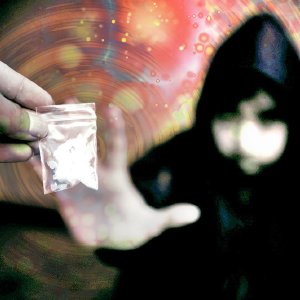Flesh-Rotting Bacteria in Heroin Now Linked to Several Poisoning Deaths

The conversation on heroin has almost always centered on overdose and for a good reason. The statistics on heroin overdoses are frightening (more on the statistics later). But now a new threat has appeared on the horizon. Now, it’s not just overdosing that addicts and their family members and loved ones have to worry about.
According to recent reports out of San Diego, people are dying from using heroin, and not by overdose. Seven new cases were just reported, almost back to back. However, these deaths were quite different from other heroin deaths. The latest deaths were not from overdoses on heroin, but rather, these deaths were from lethal bacteria within heroin—toxic substances that caused a fatal condition known as severe myonecrosis.
A Horrifying Turn of Events
A flesh-eating bacteria linked to the use of black tar heroin has already killed at least seven people in the last couple of months of 2019. These events occurred in southern California, in the San Diego area. Thankfully, this is not yet a widespread issue, and health officials and law enforcement officers local to the San Diego area are working hard to keep it that way.
“Nine people who injected black tar heroin between Oct. 2 and Nov. 24 were hospitalized with severe myonecrosis, a soft-tissue infection that destroys muscles…”

According to an article in Time Magazine, “Nine people who injected black tar heroin between Oct. 2 and Nov. 24 were hospitalized with severe myonecrosis, a soft-tissue infection that destroys muscles. Of the seven who died, five were men. The nine patients ranged from 19 to 57. Also, 13 people in Southern California have been diagnosed with wound botulism since Sept. 1, which also may be tied to black tar heroin.”
At this time, very little is known. And that’s quite worrying. At least with heroin overdoses, we know what they are, and we know how to respond to them. But this new bacterial outbreak is something else entirely.
We don’t know where the bacteria-infested heroin is coming from. We have no idea how much of the tainted heroin has made its way into the United States. We don’t know if San Diego is the only place where this batch of heroin is coming into the U.S. We don’t even know exactly how the bacteria is transmitted. All we know is that drug overdoses are no longer the only primary concern connected to heroin use.
The New Risk
As one can imagine, the existence of contaminated batches of heroin dramatically increases the risks when someone uses the drug. And using heroin was already a hazardous, toxic, dangerous, and foolish activity, in the first place.
Now addicts have even more to worry about than just the risk for lethal overdoses. Even if a heroin user who believes (incorrectly) that they can careful or cautious in their use, they may contract myonecrosis from bacteria-laced heroin. Such a contraction can easily be fatal, as the seven San Diego deaths indicate. Even someone who just uses heroin once, who uses only a tiny amount, can still contract this bacteria and die from it. Furthermore, addicts have no way of telling if the heroin they are about to use is from a tainted batch or not.
Deaths from Heroin – Overdoses Still a Huge Concern
And let’s not forget the severity or concern over heroin overdoses. Thousands of people die from heroin overdoses every year, and so far, only seven people have died from bacteria-tainted heroin (that we know about). There are a lot of reasons to be very concerned about heroin overdoses. This is still the most common cause of death related to heroin use. Quoting the National Institute on Drug Abuse: “Drug overdose deaths involving heroin rose from 1,960 in 1999 to 15,482 in 2017. … The number of deaths involving heroin in combination with synthetic narcotics has been increasing steadily since 2014.”
The Centers for Disease Control and Prevention has a great deal of information on this subject as well. Quoting the CDC: “In 2017, nearly 494,000 people in the United States (12-years old or older) reported using heroin in the past year, which is an estimated rate of 0.2 per 100 persons. And in 2015, 81,326 emergency department visits occurred for unintentional, heroin-related poisonings in America, which is an estimated rate of almost 26 per 100,000 people.”
The CDC also commented on deaths from heroin use, expanding on the data offered to us by the National Institute on Drug Abuse: “During 2017, over 15,000 people died from drug overdoses involving heroin in the United States, a rate of almost five deaths for every 100,000 Americans. Heroin-related overdose deaths increased five-fold from 2010 to 2017. In 2017, males aged 25-44 had the highest heroin death rate at 14.8 per 100,000.”
The sheer lethality of heroin is unquestionable. Pure heroin, by itself, is extremely dangerous from the risk of drug overdoses alone. And now there is this additional risk in using heroin in the form of highly harmful, flesh-eating bacteria that has gotten into the heroin supply. Now more than ever, people need to avoid this drug, and those who are addicted to it need to get clean.
Helping a Heroin Addict Get Clean Before it is Too Late

Without a doubt, the best, safest, and most successful method for helping a heroin addict break free from his or her condition is by using the help of a residential drug rehab program. Residential drug treatment centers, preferably those which offer long-term programs, can provide all of the tools, resources, and facilities needed to help individuals overcome heroin dependency.
There are physical, mental, and behavioral components to heroin addiction, as well as personal components. All of the factors of addiction need to be addressed, and only residential drug rehab centers have the tools and resources to do so. If you are seeking help for a family member or loved one who is struggling with a heroin habit, be sure to help them get into residential drug rehab as soon as possible. Heroin is a life-threatening habit. Thousands die from it every year. Don’t let your loved one become a statistic. Please make sure they get help today.
Sources:
- https://www.drugabuse.gov/related-topics/trends-statistics/overdose-death-rates
- https://www.cdc.gov/drugoverdose/data/heroin.html
Reviewed by Claire Pinelli, ICCADC, CCS, LADC, RAS, MCAP


